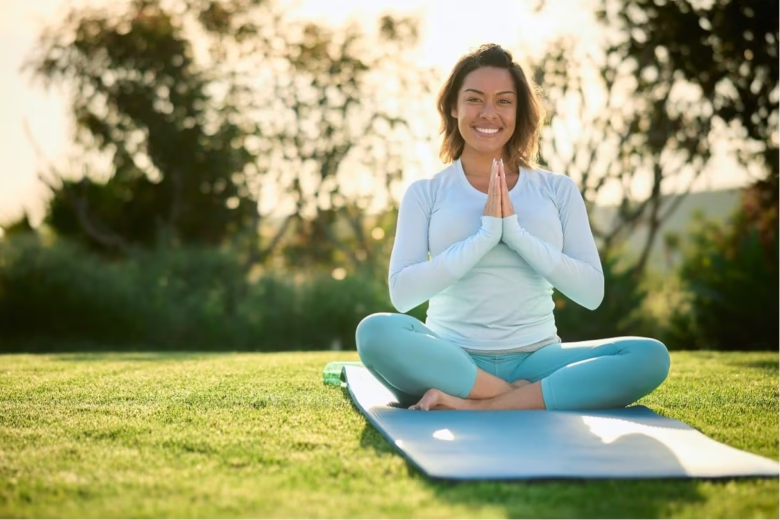Sleep is not just a nightly ritual; it’s a critical process essential for the rejuvenation of both body and mind. Yet, many of us struggle to fall asleep quickly or stay asleep through the night. Relaxation techniques have emerged as one of the most effective, non-invasive remedies for promoting better sleep. By calming the mind and reducing physical tension, these methods can help you drift off faster and enjoy deeper, more restorative rest. This blog explores a range of powerful relaxation techniques to help you achieve just that.
Introduction to Relaxation Techniques for Sleep
The modern lifestyle often leads to sleep deprivation, with endless gadgets, stressors, and schedules intruding upon hours meant for rest. Relaxation techniques are therapeutic solutions designed to prepare the body and mind for sleep. Whether you struggle to fall asleep or wake frequently at night, these methods help transition you into a state of calmness conducive to quality rest.
By incorporating breathing exercises, mindfulness, and meditation into your nightly routine, you can take control of your sleep patterns and discover the path to a healthier, more energetic you.
Understanding the Connection Between Stress and Sleep
Stress and sleep share a complex, cyclical relationship. High-stress levels activate the nervous system, making relaxation difficult and interrupting your body’s ability to enter the deep sleep cycles it needs. The hormonal imbalance, especially the overproduction of cortisol, keeps your mind racing and your body tense.
Sleep deprivation, in turn, exaggerates stress by increasing irritability, reducing emotional regulation, and impairing decision-making. Breaking this cycle is essential, and stress management plays a pivotal role in achieving the restorative sleep your body and mind yearn for.
Deep Breathing Exercises for Sleep
Deep breathing is one of the simplest yet most effective ways to calm your body before bed. Techniques like diaphragmatic breathing, 4-7-8 breathing, and alternate nostril breathing trigger the parasympathetic nervous system, signaling your body to relax.
For example, diaphragmatic breathing focuses on inhaling deeply into your belly instead of your chest, promoting oxygen flow and reducing physical tension. Similarly, the 4-7-8 method involves inhaling for four counts, holding for seven, and exhaling for eight, slowing your heart rate and preparing you for restful sleep. These structured breathing patterns are excellent tools for combating nightly anxiety and helping you unwind.
Progressive Muscle Relaxation for Sleep
Progressive muscle relaxation (PMR) is a technique that reduces physical tension by focusing on individual muscle groups. By systematically tensing and then relaxing each muscle group, from your feet to your head, this method shifts your attention from daily worries to the sensation of physical relaxation.
PMR is particularly beneficial for individuals who store stress physically, such as in their shoulders, neck, or jaw. By releasing pent-up tension, this technique not only improves comfort but also guides your body into a state of tranquility.
Mindfulness Meditation for Sleep
Mindfulness meditation trains your brain to focus on the present moment, clearing away intrusive thoughts that often disrupt sleep. By anchoring your awareness on your breath or a mantra, mindfulness creates a mental buffer between your daily activities and bedtime.
Research has shown that consistent mindfulness meditation can increase melatonin production, the hormone responsible for sleep regulation. Whether through guided apps or independent practice, this technique empowers you to transform bedtime into a sacred, calming experience.
Visualization Techniques for Sleep
Visualization taps into the creative power of your mind to create peaceful scenarios that facilitate relaxation. Imagine yourself lying on a serene beach, feeling the warmth of the sun and hearing the gentle crash of waves.
Guided imagery, often facilitated through recordings, helps distract your mind from stressors, replacing them with soothing, positive thoughts. Over time, visualization techniques can condition your brain to associate mental imagery with the onset of sleep.
Body Scan Meditation for Sleep
Body scan meditation directs your focus slowly across your body, helping you identify and release hidden areas of tension. Starting at your feet and working upward, you observe physical sensations without judgment and invite relaxation into each part of your body.
This method fosters a deep sense of connection with your body, making it easier to transition into a restful state. Body scan meditation can also be especially effective when practiced with a calm voice guide or ambient music to enhance the experience.
The Role of a Relaxing Bedtime Routine
A consistent and soothing bedtime routine signals your body and mind that it’s time to wind down. This routine might include dimming the lights, enjoying a warm cup of herbal tea, reading a book, or practicing one of the relaxation techniques mentioned above.
Consistency is key; the human body thrives on routine. By sticking to a nightly pattern, you strengthen the association between your evening activities and restful sleep, making it easier to transition smoothly into slumber.
Creating a Sleep-Conducive Environment
The space where you sleep plays a significant role in how well you rest. Start by optimizing your bedroom for comfort and relaxation. A cool temperature, minimal noise, and blackout curtains can make a huge difference in sleep quality.
Invest in comfortable bedding and ensure clutter is kept to a minimum to promote tranquility. Using white noise machines or calming playlists can further enhance the serene atmosphere needed for uninterrupted rest.
Start Your Journey to Better Sleep
Quality sleep is the foundation of physical health, emotional well-being, and daily productivity. By integrating these relaxation techniques and making intentional lifestyle adjustments, you can conquer stress and sleepless nights. Sleep is not just an act; it’s an investment in yourself.
Begin incorporating these techniques into your nightly routine and take control of your sleep patterns. For additional resources or personalized support, explore our guides and tools designed to help you achieve transformational rest.




